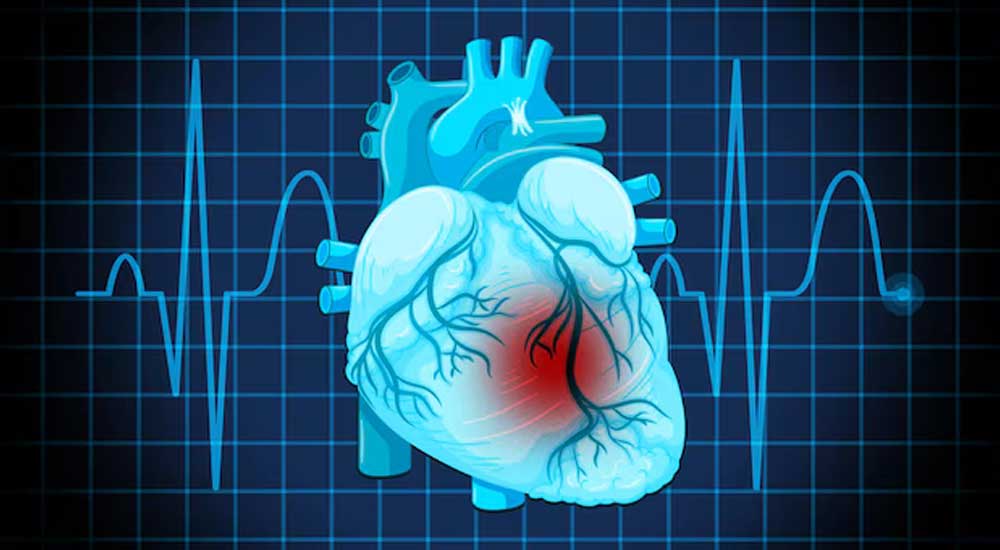
Types of congenital heart diseases you should know about
Posted By Suborna Fermi
Posted on Apr 03, 2025
“Congenital heart disease” is a term that refers to the fact that one’s heart has structural problems at the time of their birth. One baby out of a hundred babies is born with congenital heart disease. Some may have more severe defects than others. One may have a small hole in the heart or something even more severe. However, all of these issues prevent blood flow through the heart and other organs. Although these conditions can be severe, they are treatable with surgery.
What is congenital heart disease?
Congenital heart diseases or congenital heart defects are structural issues of the heart that are present at birth. The problems usually include:
- A hole in the heart
- Problems with the blood vessels (too many or too few blood vessels, blood flow is too slow, or blood flowing in the wrong direction)
- Issues with the heart valves that manage blood flow
Some heart defects can be simple and may not cause many symptoms. In contrast, some defects can be more complex than others and may cause life-threatening symptoms.
What are the types of congenital heart disease?
There are a number of congenital heart diseases or defects. The main two groups of congenital heart defects include:
1. Cyanotic congenital heart disease
This type of abnormality reduces the amount of oxygen your heart delivers to the other parts of the body. Babies with cyanotic congenital heart disease have low levels of oxygen in their bodies and require surgery. Some examples are:
- Left heart obstructive lesions: These defects can reduce blood flow between the heart and the rest of the body. Hypoplastic left heart syndrome (when the heart is too small on the left side) and interrupted aortic arch (aorta is incomplete) are two examples of left heart obstructive lesions.
- Right heart obstructive lesions: These defects reduce pulmonary blood flow (blood flow between your heart and lungs). Examples of this type include tetralogy of Fallot (a group of four abnormalities), pulmonary atresia, tricuspid atresia (valves that have not developed correctly), and Ebstein’s anomaly.
- Mixing lesions: These defects make your body mix systemic and pulmonary blood flow. Examples of this type include transposition of the great arteries (two main arteries leaving the heart are reversed), total anomalous pulmonary venous return (instead of the left side of the heart, oxygen-rich blood goes to the right side of the blood), and truncus arteriosus (instead of two main arteries, one main artery is present to carry blood to your lungs and body).
2. Acyanotic congenital heart disease
Acyanotic congenital heart disease makes the heart pump blood in an abnormal way. Some examples are:
- Hole in the heart: In this defect, the heart’s walls may have an abnormal opening. Some examples of this type of abnormality include atrial septal defect, atrioventricular canal, ventricular septal defect, or patent ductus arteriosus.
- Complications with the aorta: The aorta is the main artery that carries blood away from the heart to the rest of the body. The aorta can be too narrow (called aortic coarctation), or the opening of the aortic valves can be restricted or have two flaps in place of three (called bicuspid aortic valves).
- Complications with the pulmonary artery: The pulmonary artery carries blood from the right side of the heart to the lungs. When the pulmonary artery is too narrow, it is called pulmonary artery stenosis.
What causes congenital heart disease?
Congenital heart disease may occur due to several reasons, such as having an illness during pregnancy, smoking or drinking alcohol during pregnancy, or having abnormal chromosomes that come from either parent or happen randomly.
The term “congenital heart disease” or “congenital heart defects” does not mean that your child is defective. People who are born with it, can still live a joyous life because most CHDs are treatable. Therefore, if your child has a CHD, it is essential to consult a cardiologist.
